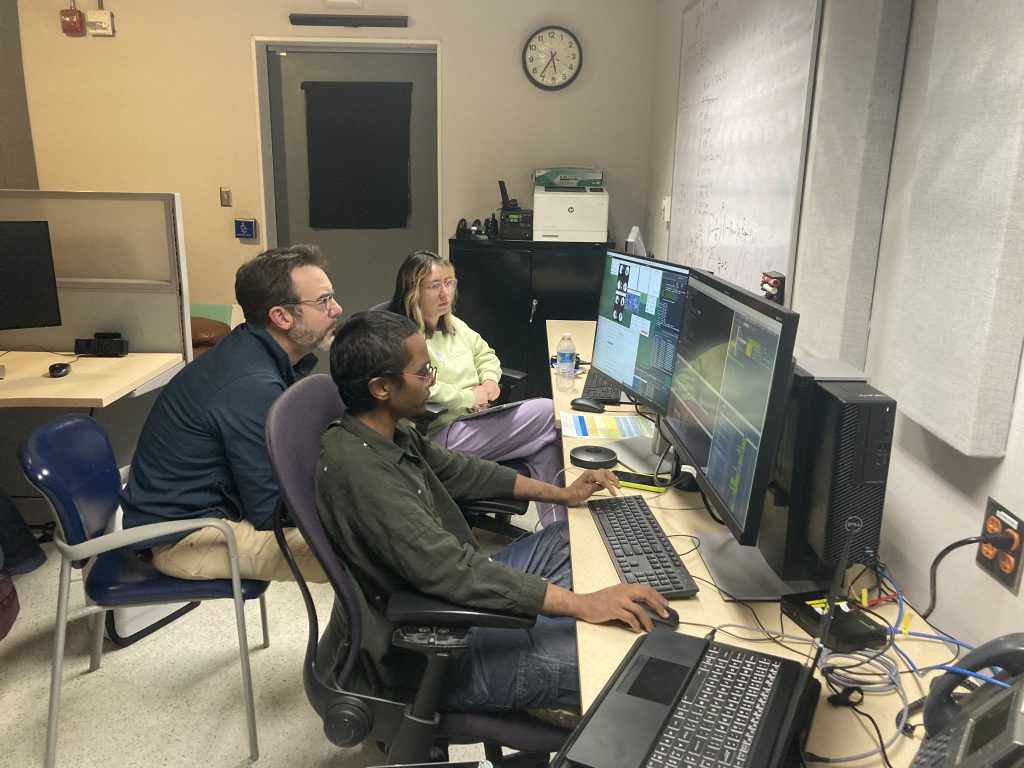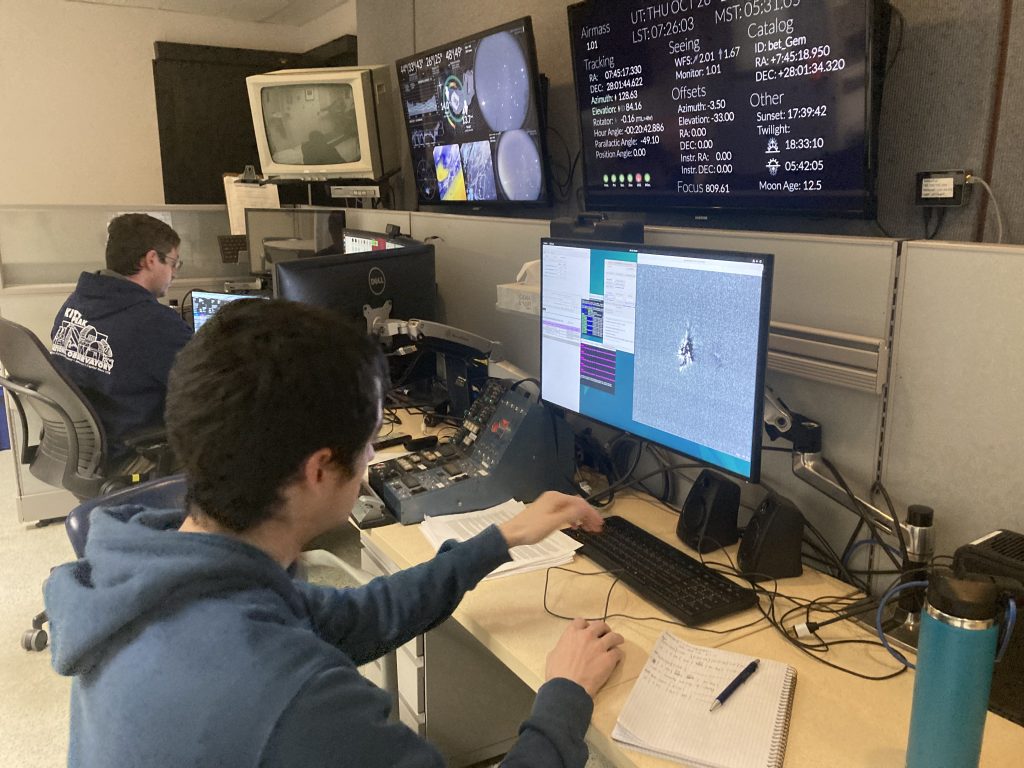Tonight felt a lot like whiplash, from tired to energized to tired to energized, from starry to humidity to starry, and from failure to fix to failure to fix!
First of all the MAPS daytime/nighttime/whenevertime support crew (Oli, Grant, Dan) drove up this afternoon with the repaired (by Ken) bias board for the CCID-75 LittleJoe controller, as well as the IR dichroic for the Saphira. Unfortunately once we plugged in the board, we were still unable to communicate over serial. Manny’s next guess is we may also have a problem with the power supply. So ultimately that will require more lab testing and repair. Instead, we’ll use our other WFS for the rest of the run.
Anyway, so it was time to get on sky. Here are all the good AO setup stars, as defined by searching Simbad for zenith-y and bright:
dec > 20 & dec < 50 & vmag < 2
Plus I added in Theta 1 Ori C for good measure(ments). (And actually Alpha Gem isn’t a good AO setup star, as it’s a binary with two very bright A stars only a few arcsec apart — but it’s zenith-y and bright.)
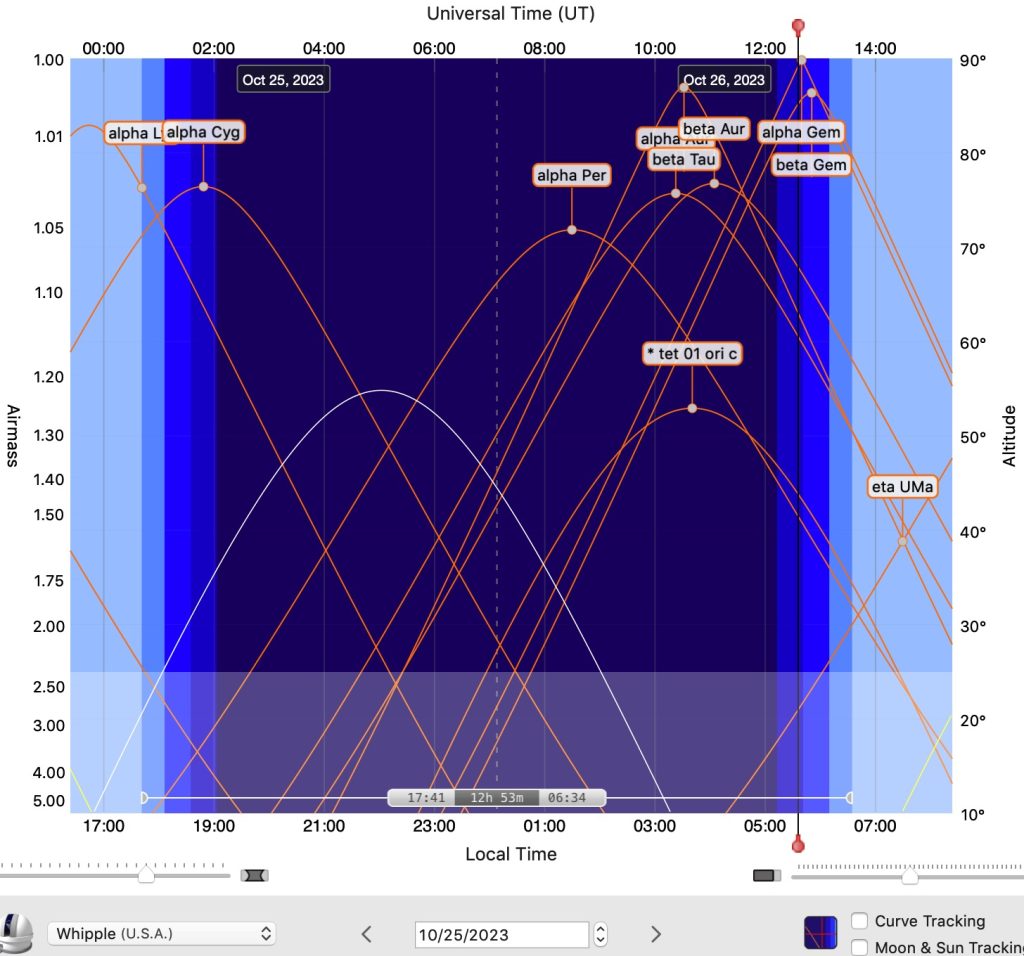
Oli, Grant, and Dan then switched out dichroics and we moved to Deneb (aka Alpha Cyg) and they were about to complete the alignment when…
More humidity rolled in! Noooo! We were shut from about 9pm to 3:30am, and Oli and Grant became night crew too.
When it cleared up again, we got back on sky — this time on Beta Tau (real name: Elnath). We found it, aligned it, saved all the offsets — and tried to switch to a new star — and the offsets no longer worked! After some telescope dancing, we (Rory, Brian, me) realized we had the wrong units for our proper motion coordinates. Sigh. So I mostly* fixed that, and now we are off and running! [*I fixed the algebra but not the trig yet — just to do it as quickly as possible by hand — and the trig has only mattered once in my experience thus far, on Proxima Cen (which is apparently the highest-proper-motion star, with a large enough dec for the cosine to matter), that I’ve ever locked on.]
Here’s an IDL code snippet for future posterity:
;; Proper motions are given from Simbad in (Cartesian) mas/yr
ans = simbad_data(star) ;; Calls the function simbad_data.pro
;; Returns ans.pm_ra which is RA proper motion in mas/yr
;; And ans.pm_dec which is Dec proper motion in mas/yr
;; And ans.icrs_dec which is sexagesimal Declination which you have
;; to convert to decimal-degrees which is the variable DEdeg
;; Magellan wants RA in sec of time per year and Dec in arcsec per year.
pmra_mag = (ans.pm_ra / 1e3) * (24/360.) / cos(DEdeg*!pi/180.)
pmde_mag = ans.pm_dec / 1e3
;; MMT wants RA in sec of time per century and Dec in arcsec per century.
pmra_mmt = ans.pm_ra * 24/3600. / cos(DEdeg*!pi/180.)
pmde_mmt = ans.pm_dec / 10. Right now Jared, Amali, and Lauren (and Andrew remotely) are taking AO calibrations with the Saphira IR WFS, and Rory is taking data with MIRAC. Oh BTW Lauren is our new team member as of this week, her first day was our first night on-sky, and she’s doing great!
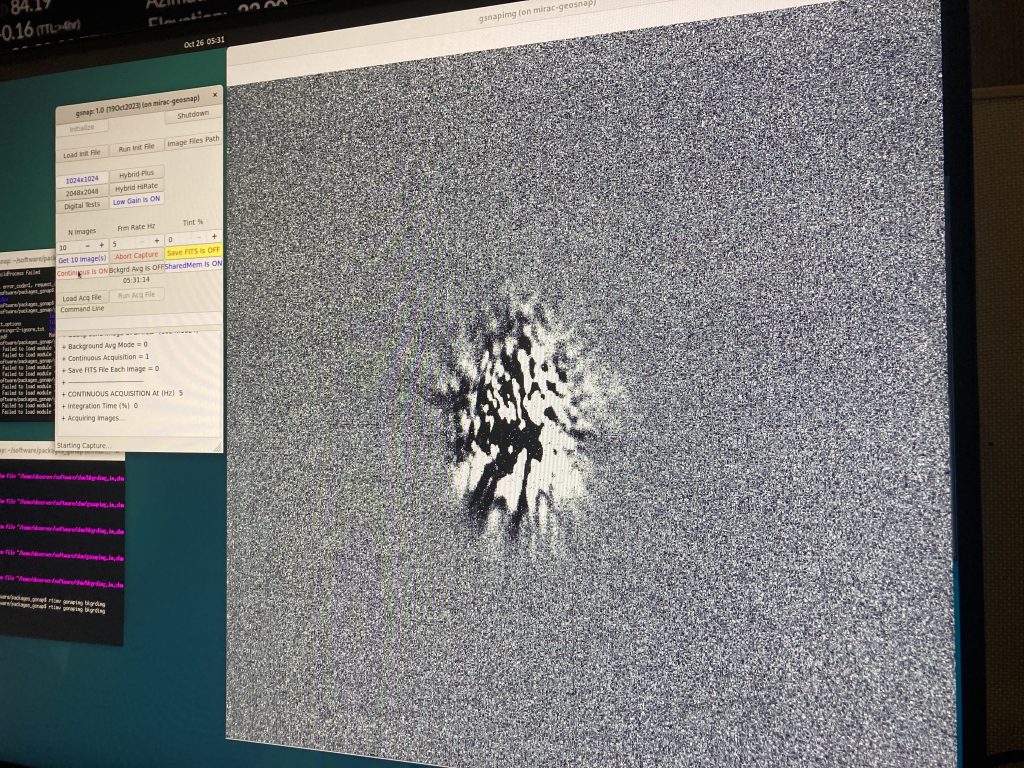
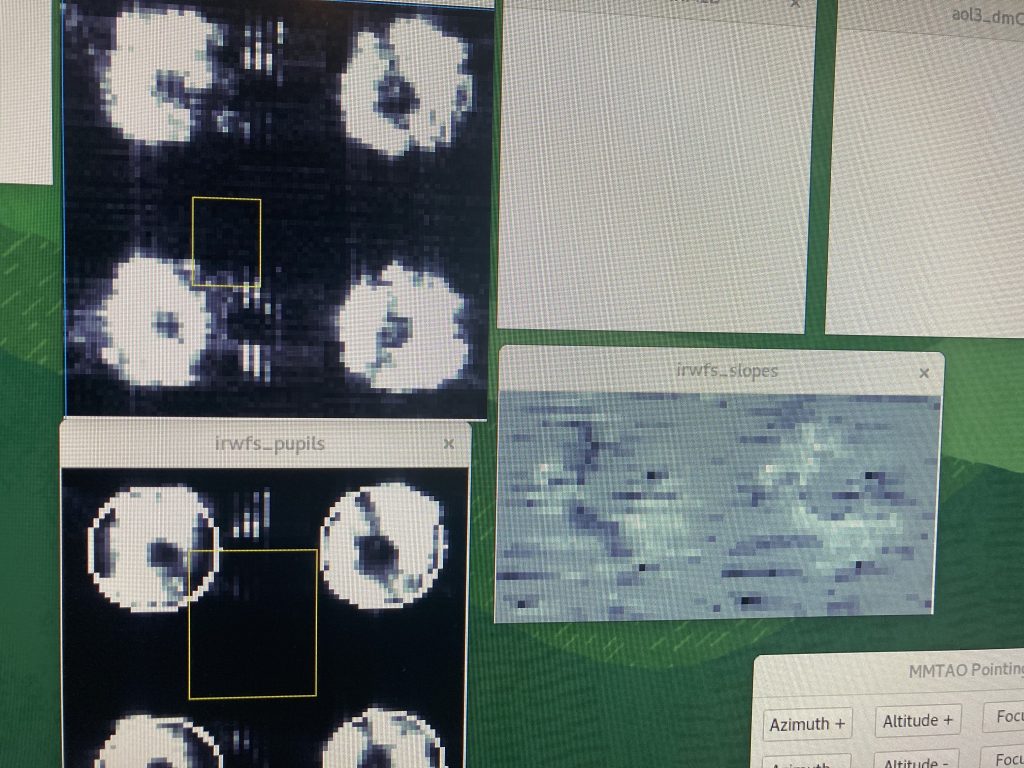
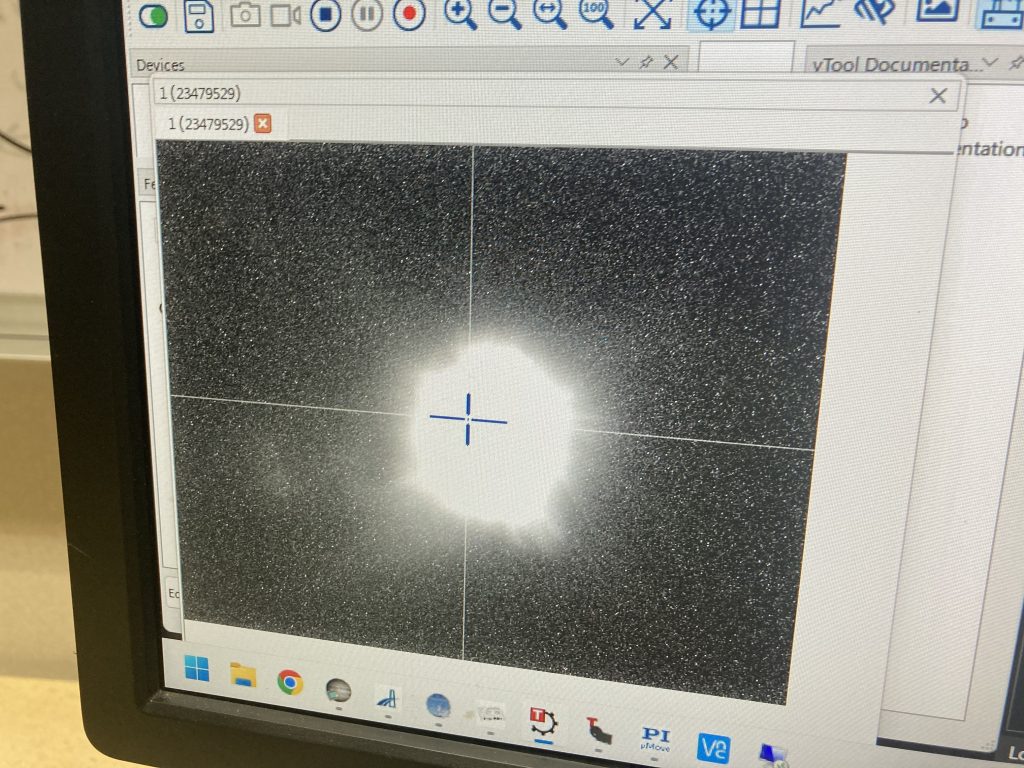
Anyway, after our 0 for 5 first night, it’s great to be working with 5/5 — (1) stars are visible, (2) telescope is allowed to open, (3) conditions are safe enough for ASM, (4) AO hardware is working, and (5) science camera is ready!
And… the loop is closed just as we passed into civil twilight from nautical (having gone well past astronomical twilight)! (This is why we always get the full-moon bright time, our tiny pixels and kHz framerates don’t care about background light except for the actual Sun itself.)
And now for The Video Of The Night… I forgot to bring my Pilates travel equipment, but I can do a little bit of a workout just rotating my myofascia in spirals like in this video by my Pilates coach, “Spirals on the Cadillac for MyoFascia Release” by Arlene Corcoran:
